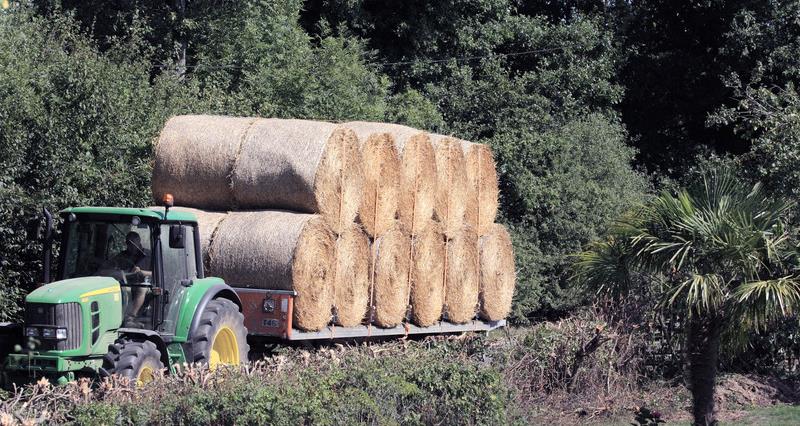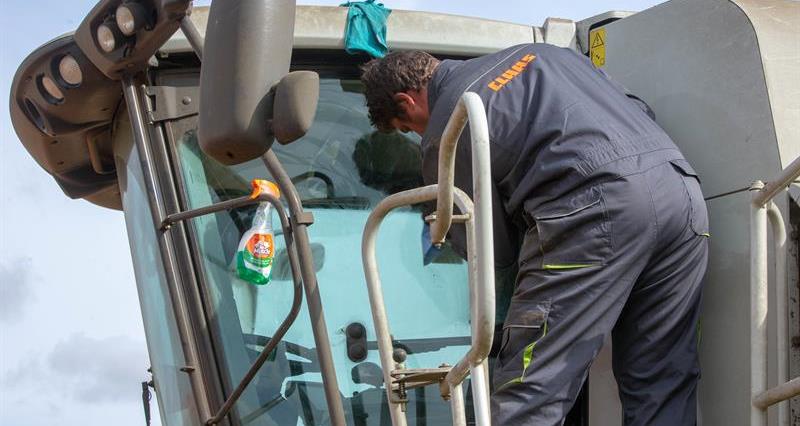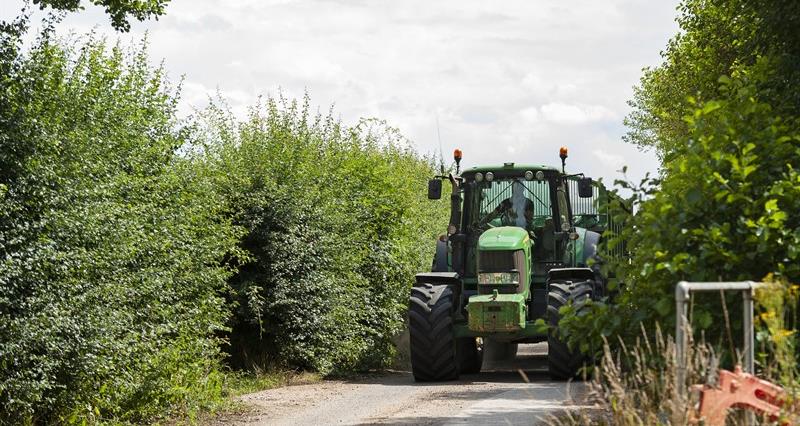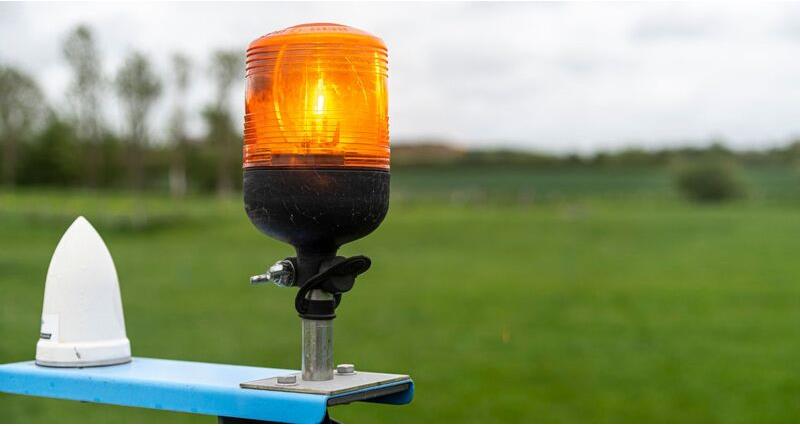Bales can pose risks whether they are being transported on the road or stacked in the farm yard and it is important to be aware of these risks to ensure that farm staff and other road users are kept safe.
As well as the safety implications, there can be significant business impacts from non-compliance.
What does the law say?
The (Road Vehicles) Construction & Use Regulations 1986 indicate that loads must be secured, if necessary by physical restraint other than their own weight, so they don’t present a danger or nuisance.
Under the road Traffic Act 1991 there is an offence for driving a vehicle in a dangerous condition which could result in a £5000 fine, 3 penalty points and disqualification. There is also an offence for dangerous driving which could result in 2 years imprisonment, death by dangerous driving could result in 10 years in prison.
This means it’s crucial to follow best practice when moving bales. And while the vehicle operator must provide suitable vehicles and equipment, and ensure that drivers and loading staff are competent and have received sufficient instruction, it is the driver’s duty to check loads are adequately secured at all times, including after a sudden manoeuvre such as heavy braking or swerving.
Before you start:
Before you start make sure you've followed our checklist of safety considerations:
- Ensure all equipment is appropriate and in suitable working order for the task
- Always stack away from overhead cables. See: Safe working near overhead power lines – what you need to know
- Do not use bales that have bowed, have loose strings or are not compacted, as they could compromise the stability of the bale stack
- Care needs to be taken when working at height. See: Working safely at height – what does the guidance say?
- Where possible, leave small air gaps between bales to avoid sweating and movement, especially with fresh hay
Bale stacks can often be tempting places for children to play on farm, but if the stack is not stabilised and safe then the bales can easily fall onto unsuspecting persons in the vicinity or farm machinery. If an injury occurs from an unstable bale stack, this could result in prosecution and penalties.
Many incidents in recent years highlight the dangers of unsafe bale stacks.
Stacking bales on farm
Square bales should be stacked so they interlock, and each layer covers the joints between the bales on the lower bales. This can be achieved by stepping or “brick” stacking the bales.
Where possible, keep the stack no higher than 6m or 1x the width of the base, whichever is less. Use the widest and most compact bales at the bottom to ensure a stable and secure foundation for the stack.
Bales should be stacked with the string on the top/bottom of the bale.
For round bales “Pyramid” Stacking is recommended where possible. They should be stacked in an area free of other obstructions. Chocks can be used to help stabilise the bottom layer of the stacks and prevent movement from settling bales.
“Tin can” style should be avoided unless necessary. This style should only be used if there is support on at least three sides of the stack and there is no risk of the bales falling on to pedestrians/livestock/machines.
Stacking trailers and transporting bales
Vehicle requirements
Trailers used for transporting bales may be converted HGV trailers. Transporting bales can put large forces on such trailers. It is important that any trailer has been constructed to the standards specified in the Construction and Use Regulations.
Brakes
Suitable brakes must be fitted (25% braking efficiency under 40 km/h (approx. 25 mph) 45% braking efficiency and duel line failsafe for over 40 km/h.
Trailers should be plated with their axle and load weights to ensure those loading the trailer have the relevant information to prevent overloading.
Anchorage points
Before a vehicle is loaded, it should be checked to ensure that it is in sound condition including the body work and anchorage points. Current DfT advice is that rope hooks are not suitable for securing loads as they are not built to a specified standard and may be prone to distorting when under tension from webbing.
It may be necessary to retrofit anchor points to the vehicle to a rated capacity of 0.5 tonne, 1.0 tonne or 2.0 tonne or upwards. You can refer to the DfT guide for constructional requirements for more information.
Tyre pressure
Tyre pressures are critically important and should be inflated to the correct pressure for on-road use. Underinflated and un-evenly inflated tyres can lead to instability when cornering due to the relative height of the load.
If you are transporting bulk loads of hay or straw or other forage, this must be transported in a vehicle which has body sides. The body sides should be of sufficient height not only to completely contain the material when it is loaded, but also to reduce the likelihood of any part of the load, which might have moved during the journey, from falling or being blown over the edge.
All vehicles with an overall travelling height above 3 metres must have the maximum height of the vehicle in feet and inches displayed inside the cab so that it is clearly visible to the driver.
Loading
Headboards, sideboards and tailboards fitted to vehicles, if adequately constructed, may provide some restraint to movement of the load. Lashings must be used whenever the height of the load exceeds the height of any of the boards.
It is most important that lashings which provide forward restraint are as near to the horizontal as possible and never at an angle of more than 60° this is because the effort required to restrain the load increases sharply as the lashings approach the vertical position. There should be at least one lashing on each column of bales with additional cross straps at the rear.
Never exceed the gross or axle weight limits for the vehicle.
If shunting bales across the trailer bed, ensure it does not compromise the stability of the stack and ensure there is no one in the vicinity.
Each column of bales should be strapped with additional cross-strapping at the rear, or strapping along each row of bales, with a least two additional staps each on the front and rear columns.

Round bales
Round bales can be transported either on-end or on their side across the trailer so as to roll forwards. The DfT advise that if the length of the bale is less than twice its diameter, they should be placed on end.
When placed on its side, each row must contact the one in front, and rear ones must be chocked to prevent rolling backwards. Extra packing may be required to help ensure bales do not roll.
If loaded on its side, a loading arrangement as highlighted in the diagram below, should be followed. When the bottom layer has been positioned and secured on the platform and the first roll of the second layer (‘A’) has been loaded, the over lashings are laid over ‘A’ and across the top of the bottom layer.
No tension is applied to the lashings at this stage. The remaining rolls can now be loaded after which the ‘between-layers’ lashings are secured to the rear of the vehicle and ‘tap-over’ lashings applied.

If the bales are standing on end, lashings must be used to prevent sideways movement and further cross lashings must be applied. If on their sides, bales should have at least one cross lashing for each item. If there is more than one layer, the rearmost bale must be restrained by lashing or blocking against rearward motion.
Square bales
This covers Conventional/Flat 8, Hesston Bales, Quadrant Bales, ¾ Hesston and Mini Heston and wrapped bales of these types.
If the material that is to be transported is in bales, then the suggested loading pattern is as follows:

-
Bales should be stacked tightly in the trailer to provide additional support and reduce the risk of bales moving.
-
On a trailer, the top layer of bales should bind the bottom layers. Each bale on the top layer should be placed over the crack between the bales of the lower layers.
-
Use the widest and most compact bales at the bottom to ensure a stable and secure foundation for the stack.
- Bales should be stacked with the string on the top/bottom of the bale.



